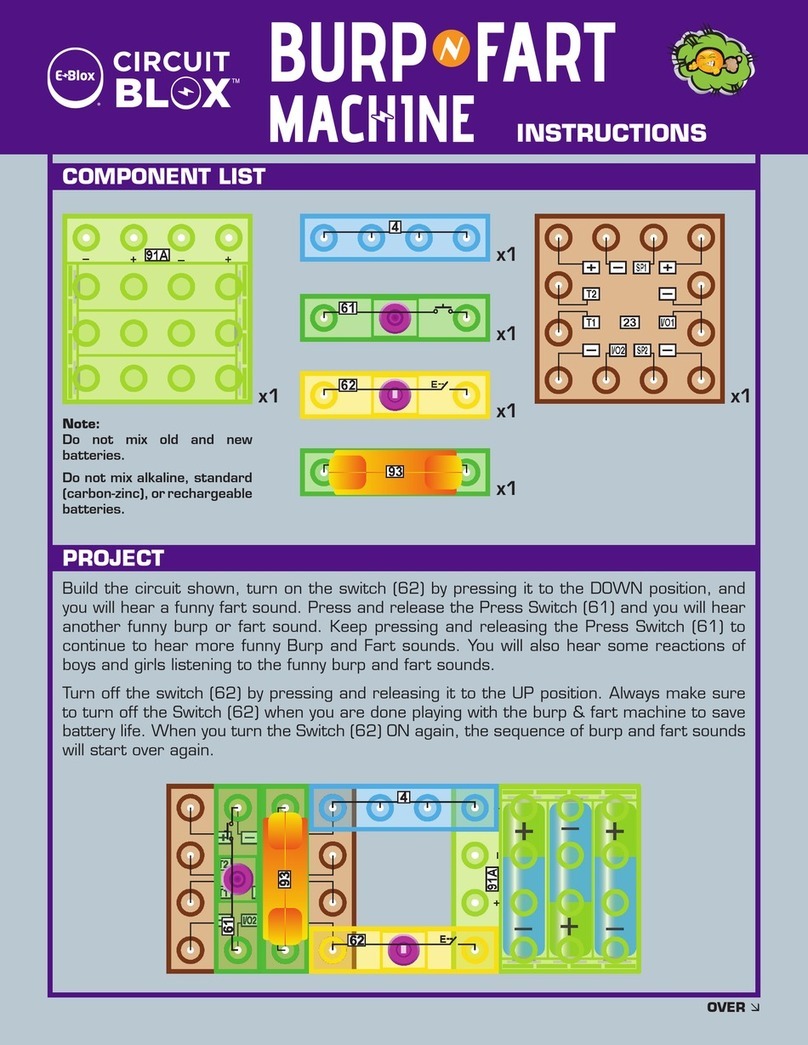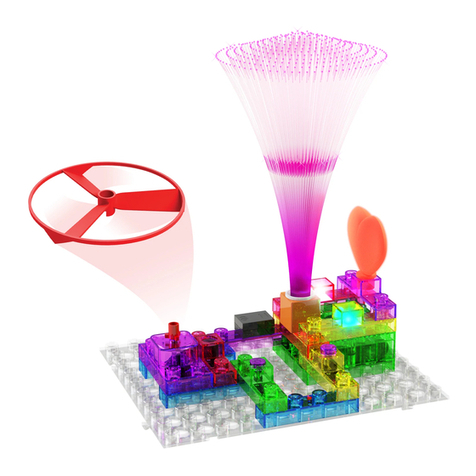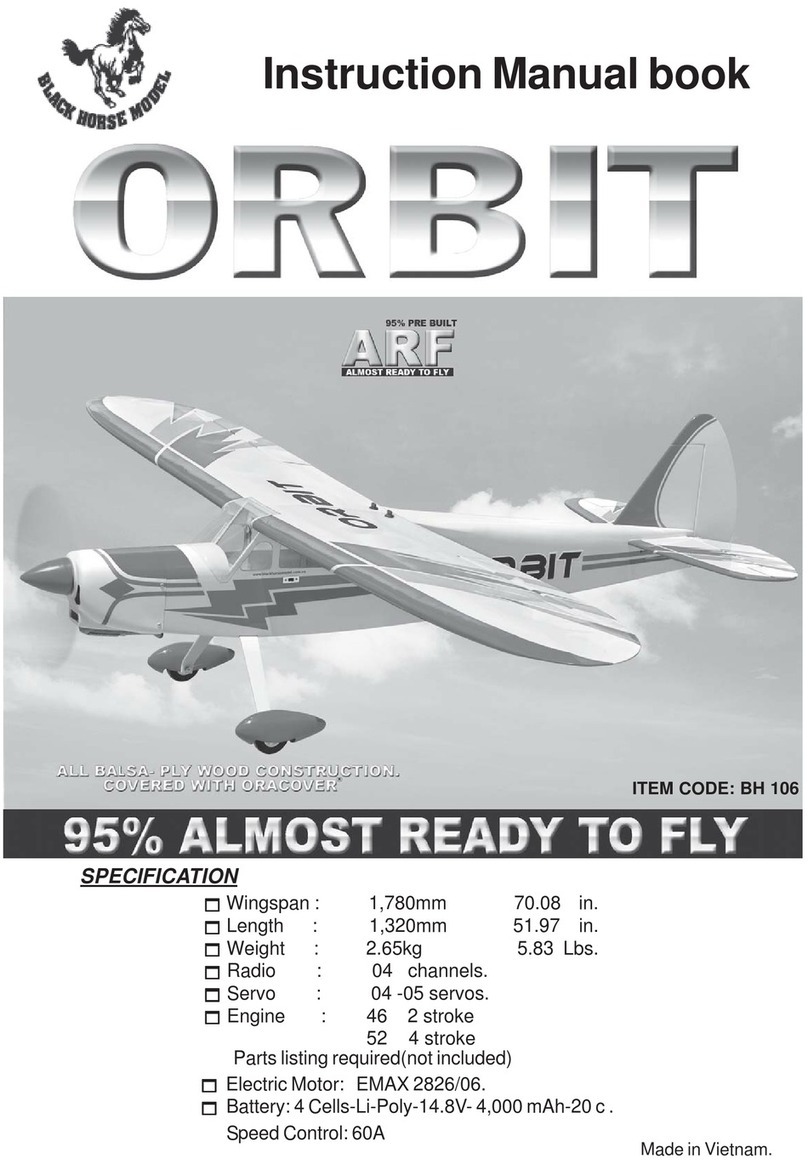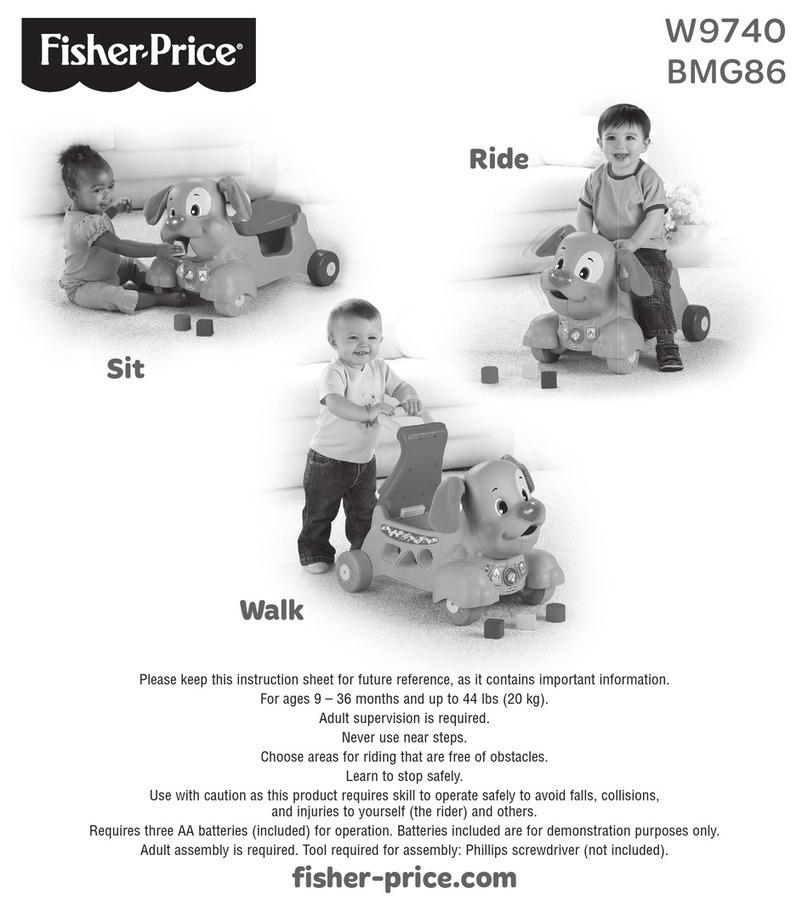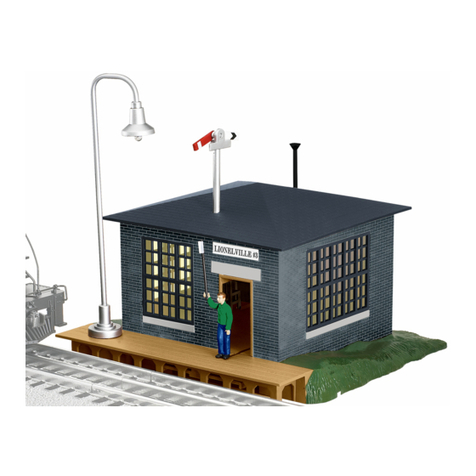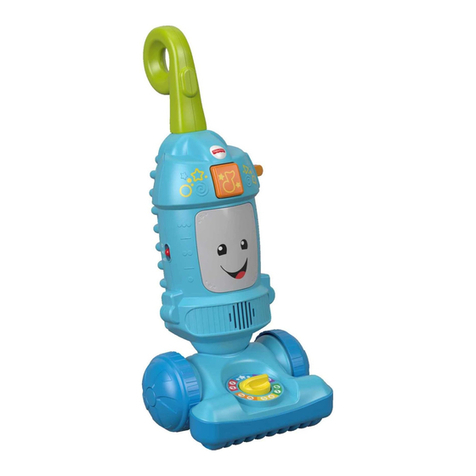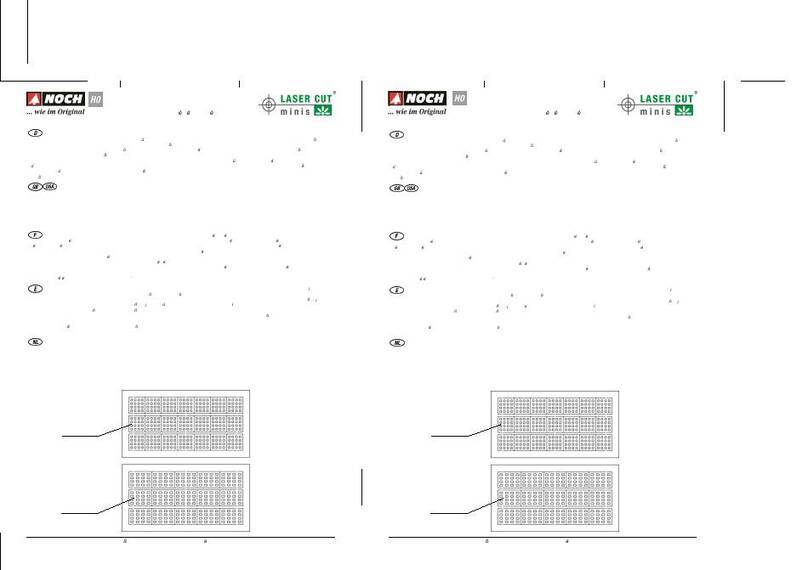E-BLOX CIRCUIT BUILDER 115 User manual

E-BLOX_2X_Model_115_042517 5/17/2017 10:58 AM Page 1

-1-
WARN NG:
SHOCK HAZARD
Never connect -Blox®Circuit
Builder to the electrical outlets in
your home in any way!
WARN NG:
CHOK NG HAZARD
Small parts. Not for children
under 3 years.
!
WARN NG:
MOV NG PARTS
Do not touch the fan while it is
spinning.
WARN NG:
Only use the battery holder with
the cover securely in place.
!
!
WARN NG: Always check your wiring before turning on a circuit. Never leave a circuit
unattended while the batteries are installed. Never connect additional batteries or any
other power sources to your circuits. Discard any cracked or broken parts.
Adult Supervision:
Because children’s abilities vary so much, even with age groups, adults should exercise
discretion as to which experiments are suitable and safe (the instructions should enable
supervising adults to establish the experiment’s suitability for the child). Make sure your
child reads and follows all of the relevant instructions and safety procedures, and keeps
them at hand for reference.
This product is intended for use by adults and children who have attained sufcient
maturity to read and follow directions and warnings.
Never modify your parts, as doing so may disable important safety features in them, and
could put your child at risk of injury.
FCC Notice: Please note that changes or modications not expressly approved by the
party responsible for compliance could void the user’s authority to operate the equipment.
NOTE: This equipment has been tested and found to comply with the limits for a Class B digital
device, pursuant to Part 15 of the FCC Rules. These limits are designed to provide reasonable
protection against harmful interference in a residential installation. This equipment generates,
uses and can radiate radio frequency energy and, if not installed and used in accordance with
the instructions, may cause harmful interference to radio communications. However, there is
no gaurantee that interference will not occur in a particular installation. f this equipment
does cause harmful interference to radio or television reception, which can be determined by
turning the equipment off and on, the user is encouraged to try to correct the interference
by one or more of the following measures:
• Reorient or relocate the receiving antenna. • ncrease the separation between the equipment
and receiver. • Connect the equipment into an outlet on a circuit different from that to which
the receiver is connected. • Consult the dealer or an experienced radio/TV technician for help.
E-BLOX_2X_Model_115_042517 5/17/2017 10:58 AM Page 2

-2-
Batteries:
lUse only 1.5V “AA” type, alkaline batteries (not
included).
lnsert batteries with correct polarity.
lNon-rechargeable batteries should not be
recharged.
lRechargeable batteries should only be charged
under adult supervision, and should not be
recharged while in the product.
lDo not connect batteries or battery holders in
parallel.
lDo not mix old and new batteries.
lDo not mix alkaline, standard (carbon-zinc), or
rechargeable (nickel-cadmium) batteries.
lRemove batteries when they are used up.
lDo not short circuit the battery terminals.
lNever throw batteries in a fire or attempt to open
its outer casing.
l
Batteries are harmful if swallowed, so keep away
from small children.
1. Most circuit problems are due to incorrect assembly, always double-check that your circuit exactly matches
the drawing for it.
2. Be sure that parts with positive/negative markings are positioned as per the drawing.
3. Be sure that all connections are securely made.
4. Try replacing the batteries.
Note: Rechargeable batteries do not work as well as alkaline batteries.
E-Blox®is not responsible for parts damaged due to incorrect wiring.
Basic Troubleshooting
!
Note: If you suspect you have damaged parts, you can follow the Advanced Troubleshooting
procedure on page 15 to help determine which ones need replacing.
E-BLOX_2X_Model_115_042517 5/17/2017 10:58 AM Page 3

-3-
About Electricity
1. What is Electricity?
Q: So many things are connected to electricity, such as
lamps, TVs, and air conditioners. Can you tell me what
electricity is?
A: It can be dened as the movement of
sub-atomic particles (with their
electrical charges) through a material
due to an electrical charge outside the
material. There are some examples in
our daily life, such as lightn ing and
static electricity.
2. Who Discovered Electricity?
Q: Who discovered electricity?
A: I am going to tell you a story that can be traced back to
at least 600 BC . In ancient Greece, it was found that
rubbing fur on amber cause an attraction between the two. This
discovery is credited to the philosopher Thales of Miletus. One
day, when he was polishing his amber at home, he found that a
piece of fur was attracted by the amber after he
put it on the desk. Then he split them, but it
happened again. So he made record about the
phenomenon. It was to be many centuries before
anyone was able to connect this phenomenon
with electricity and a century more before
electrical current was put to practical use.
3. How to Categorize Electricity?
Q: Are we using the same electricity to power the air
conditioner and the remote control?
A: Good question! Actually they are totally
different. What we use in the air conditioner
is called alternating current, because
the ow of electric charge periodically
reverses direction. All home appliances
use alternating current; whereas, we use
direct current in the remote control, in
which the ow of electric charge is only in
one direction.
4. Wireless
Q: My parents tell me that the weather report is
transferred by the satellite, but I know it is impossible for
us to connect a wire to outer space. How do we
deliver these messages?
A: Wireless communication is the
transfer of information between two or
more points that are not connected by
an electrical conductor. So scientists
upload the information by wireless
waves, so it can transfer to wherever
they want.
E-BLOX_2X_Model_115_042517 5/17/2017 10:58 AM Page 4

-4--4-
About Electricity
5. What did people do in electricity research? 6. Unit of Electricity
7. Application of Electricity 8. What is Triboelectrication?
Q: What did people do in electricity research after Miletus’ discovery?
A: Dating back to the 18th century, Benjamin Franklin, a famous American scientist,
proved that lightning was caused by electricity by describing an experiment in which
an electrical conductor would be used to extract power from a thundercloud. In the
experiment, he ew a kite with a metal key attached to it into a suitable cloud. The precise
historical details are unclear, but he may have then retrieved the key and discharged
electricity from it. By using the principles, he successfully invented the lightning rod. In 1799,
the Italian scientist Alessandro Volta went on to create a “voltaic pile”
consisting of alternating layers of copper and zinc separated by paper
soaked in salt water. This generated a larger current and is credited
as the rst battery. In 1821, the nglish scientist Michael Faraday
created the world’s rst electric motor, even though it was very
simple. All the motors that we use today are based on that design.
Ten years later, Faraday made another contribution to the world with
his second crucial invention, the dynamo. In 1866, the rst industrial
dynamo was invented by a German named Siemens.
Q: What is the unit for electricity?
A: lectricity has various related units of measure. lectrical current
ow is measured in Amperes (Amps), which is named in honor of
the famous French physician André-Marie Ampère and the
contribution that he made. lectrical resistance is measured
in Ohms, which is named after the German physicist
George Ohm for his contributions. lectrical force, or the
electrical difference of potential that would drive one
ampere of current against one ohm of resistance, is
measured in Volts, which is named after the Italian
physicist Alessandro Volta for his contributions.
lectrical power is measured in Watts, which is
named after the famous Scottish inventor James
Watt for his contributions.
Q: All the home appliances don’t work when a blackout
happens. It is very inconvenient without electricity in life.
A: Absolutely! We need electricity
a lot because it can either be
used for cooking, watching TV, or
transportation.
Q: I found it very interesting that a plastic ruler cannot
attract any bits of paper, but when it is rubbed against hair
several times it does.
A: Yes, that’s it! This is the phenomenon
of Triboelectrication. Rubbing glass with
fur, or a comb through your hair, can build
up triboelectricity. Most everyday static
electricity is triboelectric. The polarity and
strength of the charges produced differ
according to the materials, surface
roughness, temperature, strain, and other
properties.
E-BLOX_2X_Model_115_042517 5/17/2017 10:58 AM Page 5

-5-
About Electricity
9. What is Current? 10. What is Voltage?
11. Electricity Generation 12. Battery Recycling
Q: What is current? Is that like water ow? Can it ow too?
A: Yeah, good question. lectric current can ow too, but it
is totally different from water ow. lectric current is a ow
of electric charge.
Q: What is voltage?
A: Voltage is equal to the work done per unit of charge against
a static electric eld to move the charge between two points.
A voltage may represent either a source of energy
(electromotive force), or lost,
used, or stored energy (potential
drop).
Q: How do they make electricity for daily use?
A: There are seven fundamental
methods of directly transforming
other forms of energy into electrical
energy: fossil-fuel, biomass,
hydro/tidal, wind, nuclear,
mechanical power generation, and
solar thermal energy. Certainly there
will be more methods for electricity
generation to be found, since the
scientists are always researching.
Q: How do we recycle used batteries?
A: Battery recycling aims to reduce the number of batteries being
disposed as municipal solid waste. Batteries contain a number of
heavy metals and toxic chemicals and their dumping has raised concerns
over soil contamination and water pollution. Most typical kinds of batteries
can be recycled. However, some batteries are recycled more readily than
others, such as lead-acid automotive batteries (nearly 90% are recycled)
and Press Switch cells (because of the value and
toxicity of their chemicals). Other types, such as
alkaline and rechargeable, e.g., nickel-cadmium
(Ni-Cd), nickel metal hydride (Ni-MH), lithium-ion (Li-
ion) and nickel zinc (Ni-Zn), can also be recycled.
So kids, please do something for battery recycling
in our daily life from now on.
E-BLOX_2X_Model_115_042517 5/17/2017 10:58 AM Page 6

-6-
About Electricity
13. Power Supply 14. Switch
15. Home Appliances 16. Wire
A power supply is an electronic device that supplies electric
energy to an electrical load. The primary function of a power
supply is to convert one form of electrical energy to another.
There are both DC (direct current) and AC (alternating current)
power supplies. Batteries are a type of power supply in which
chemical energy is converted into electricity.
A switch is a device that controls all the other components in the
circuit. It is used for power connection and disconnection. A switch
should be connected in series with the other functional components,
otherwise, it will cause a short circuit.
Home appliances are
electrical / mechanical
machines which accomplish
some home functions such
as cooking or cleaning.
Wire is mainly used for connecting circuits and transferring
electricity.
E-BLOX_2X_Model_115_042517 5/17/2017 10:58 AM Page 7

-7-
About Electricity
17. Circuit 18. Conductor
19. nsulator 20. Semiconductor
Like owing water through a pipe, current is owing through the circuit
too. lectric circuits accomplish the transfer of current by connecting to
a power supply, switch, and other functional components with wires. It can
be mainly dened by series and parallel circuits.
A circuit composed solely of components
connected in series is known as a series circuit;
likewise, one connected completely in parallel is
known as a parallel circuit. If two lamps
are connected in the series circuit and
one of them burns out, the other one
cannot work. However, it will still work in
the parallel circuit. All home circuits are
parallel circuits to avoid interferences.
A conductor is an object or type of material that allows the ow
of electrical current in one or more directions. The conductivity
varies for different materials. For example, metal, lead, acid, or
alkali salt are good conductors. Humans are conductors too, so
be careful around electricity.
A semiconductor material has an electrical conductivity value
falling between that of a conductor and an insulator, such as a
diode or triode. The conductivity of semiconductor material can
be easily affected by increasing temperature and ashing lights.
A substance that resists electricity is called an insulator.
xamples of insulators are glass, rubber, ceramics, and plastics.
The plastic covers outside wires are commonly used insulators.
E-BLOX_2X_Model_115_042517 5/17/2017 10:58 AM Page 8

Qty.
Name Symbol Part #
2
1-wire
Block 6 B2X01
6
2-wire
Block 6 B2X02
2
3-wire
Block 6 B2X03
3
4-wire
Block 6 B2X04
1
5-wire
Block 6 B2X05
1
Press
Switch 6 B2X61
1
Switch 6 B2X62
1
Lamp 6 B2X76
Qty.
Name Symbol Part #
1
Touch
Plate
6 B2X80
1
Reed
Switch
6 B2X83
1
Spring
Wire
6 B2X09
1
Motor
Shaft Cap
6 B2X59
1
Motor
Top
6 B2X64
2
Level
1-Block
6 B2X100
2
Level
2-Block
6 B2X200
2
Plated
Block
6 B2X101
-8-
mportant: If any parts are missing or damaged, DO NOT RETURN TO RETA LER. Call toll-free (855) MY BLOX
(693-2569) or e-mail us at: [email protected]. Customer Service: 880 Asbury Dr., Buffalo Grove, IL 60089 U.S.A.
Parts List (colors and styles may vary) Symbols and Numbers
E-BLOX_2X_Model_115_042517 5/17/2017 10:58 AM Page 9

Qty.
Name Symbol Part #
1 L D 6 B2X69
1 Speaker 6 B2X93
1 Magnet
6 B2X07
1
Fan
Blade
6 B2X60
1 Motor 6 B2X95
Qty.
Name Symbol Part #
1
Base
Grid
6 B2X39
1
Three-in-
One
6 B2X11
1
1
Battery
Holder
Battery
Cover
6 B2X91
6 B2X91C
-9-
E-BLOX_2X_Model_115_042517 5/17/2017 10:58 AM Page 10

-10-
-Blox®Circuit Builder™ parts contain a PC board with
connectors so you can build the different electrical and
electronic circuits in the projects. ach block has a
function: there are switch blocks, a light block, battery
block, wire blocks, etc. These blocks are different colors
and have numbers on them so that you can easily identify
them.
For Example:
This is the press switch, it is green and has the marking
61 on it. The part symbols in this booklet may not exactly
match the appearance of the actual parts, but will clearly
identify them.
This is a wire block which comes in 5 different lengths.
The part has the number 1, 2, 3, 4, or 5 on it depending
on the length of the wire connection required.
There are also 1-post and 2-post blocks that are used as
a spacer or for interconnection between different layers.
You need a power source to build each
circuit. The part is marked 91 and
requires three (3) 1.5V “AA” batteries
(not included). The four connections are
marked −, 1.5V, 3V, and 4.5V.
A short circuit indicator L D lights if any
of the outputs are shorted or under a
high current draw.
Only use the battery holder when the cover is securely in
place.
Included is a special plated wire 1 block which allows you
to connect to other -Blox®series (see last page).
A large clear plastic base grid is included with this kit to
help keep the circuit blocks properly spaced. You will see
evenly spaced posts that the different blocks plug into.
Next to the assemble drawing may be a part with an
arrow and red circle as shown below. This indicates that
the part is installed below other parts and which level it is
on.
How to Use Your E-Blox®Circuit BuilderTM Set
2nd level
E-BLOX_2X_Model_115_042517 5/17/2017 10:58 AM Page 11

-11-
(Part designs are subject to change without notice).
The base grid functions like the printed circuit boards
found in most electronic products. It is a platform for
mounting parts and wire blocks (though the wires are
usually “printed” on the board).
The blue wire blocks are just wires used to connect
other components, they are used to transport electricity
and do not affect circuit performance. They come in
different lengths to allow orderly arrangement of
connections on the base grid.
The spring wire (9) is two single blocks connected by a
wire used to make unusual connections.
The batteries (91) produce an electrical voltage using a
chemical reaction. This “voltage” can be thought of as
electrical pressure, pushing electrical “current” through
a circuit. This voltage is much lower and much safer than
that used in your house wiring. Using more batteries
increases the “pressure” and so more electricity flows.
The switch (62) connects (ON) or disconnects (OFF) the
wires in a circuit.
The press switch (61) connects (pressed) or
disconnects (not pressed) the wires in a circuit, just like
the switch does.
A reed switch (83) is an electrical switch operated by
an applied magnetic field. When exposed to a magnetic
field, the switch closes (ON). When the magnetic field is
removed the switch opens (OFF).
The blue level blocks (100 & 200) are non-conductive
and just used as building blocks.
T
he touch plate (80) is a type of switch when both
electrodes are touched together using your finger, shorts
the two electrodes and a small amount of current flows,
activating the circuit.
The LED (69) is a light emitting diode inside the heart,
and may be thought of as a special one-way light bulb. In
the “forward” direction (indicated by the “arrow” in the
symbol) electricity flows if the voltage exceeds a turn-on
threshold (about 1.5V); brightness then increases. L Ds
block electricity in the “reverse” direction.
The 4.5V lamp (76) contains a special wire (filament)
that glows bright when a large electric current passes
through it. Voltages above the bulb’s rating can burn out
the wire.
The speaker (93) converts electricity into sound. It does
this by using the energy of a changing electrical signal to
create mechanical vibrations (using a coil and magnet
similar to that in the motor). These vibrations create
variations in air pressure which travel across the room.
You “hear” sound when your ears feel these air pressure
variations.
The motor (95) converts electricity into mechanical
motion. lectricity is closely related to magnetism, and
an electric current flowing in a wire has a magnetic field
similar to that of a very, very tiny magnet. Inside the
About Your E-Blox®Circuit BuilderTM Parts
E-BLOX_2X_Model_115_042517 5/17/2017 10:58 AM Page 12

motor are three coils of wire with many loops. If a large
electric current ows through the loops, the magnetic
effects become concentrated enough to move the coils.
The motor has a magnet inside, so as the electricity
moves the coils to align them with the permanent
magnet, the shaft spins.
Some types of electronic components can be super-
miniaturized, allowing many thousands of parts to t into
an area smaller that your ngernail. These “integrated
circuits” (ICs) are used in everything from simple
electronic toys to the most advanced computers.
The three-in-one (11) modules contain specialized sound-
generation ICs and other supporting components
(resistors, capacitors, and transistors) that are always
needed with them. This was done to simplify the
connections you need to make to use them. The pin
descriptions are given here for those interested, see the
projects for connection examples:
-12-
About Your E-Blox®Circuit BuilderTM Parts
Three-in-One
T1, T2 - control inputs
SP1 - speaker – connection
SP2 - speaker + connection
I/O1 - music select
I/O2 - space sound select
(+) - power to batteries
(–) - power return to batteries
E-BLOX_2X_Model_115_042517 5/17/2017 10:58 AM Page 13

-13-
After building the circuits given in this booklet, you may wish to experiment on your own. Use the projects in this booklet
as a guide, as many important design concepts are introduced throughout them. very circuit will include a power
source (the batteries), a resistance (which might be an L D, lamp, motor, integrated circuit, etc.), and wiring paths
between them and back. You must be careful not to create “short circuits” (very low-resistance paths across
the batteries, see examples below) as this will damage components and/or quickly drain your batteries. Only
connect the parts using configurations given in the projects, incorrectly doing so may damage them. E-Blox®is not
responsible for parts damaged due to incorrect wiring.
Here are some important guidelines:
DO
USE EYE PROTECT ON WHEN EXPER MENT NG ON YOUR OWN.
DO
include at least one component that will limit the current through a circuit, such as the speaker, lamp, L D,
integrated circuit (IC, which must be connected properly), or motor.
DO
disconnect your batteries immediately and check your wiring if something appears to be getting hot.
DO
check your wiring before turning on a circuit.
DO
connect the IC using configurations given in the projects or as per the connection descriptions for the part.
DON’T
connect to an electrical outlet in your home in any way.
DON’T
leave a circuit unattended when it is turned on.
DON’T
touch the motor when it is spinning at high speed.
DOs and DON’Ts of Building Circuits
E-BLOX_2X_Model_115_042517 5/17/2017 10:58 AM Page 14

-14-
Placing a wire block directly across the battery holder is a SHORT
CIRCUIT, indicated by a flashing L D in the battery holder.
When the switch (S1) is turned on, this large
circuit has a SHORT CIRCUIT path (as shown by
the arrows). The short circuit prevents any other
portions of the circuit from ever working.
!
NEVER DO
TH S!
Examples of SHORT C RCU TS – NEVER DO TH S!
!
NEVER DO
TH S!
!
NEVER DO
TH S!
WARN NG:
SHOCK HAZARD!
Never connect -Blox®Circuit BuilderTM to the electrical
outlets in your home in any way!
E-BLOX_2X_Model_115_042517 5/17/2017 10:58 AM Page 15

-15-
E-Blox®is not responsible for parts damaged due to
incorrect wiring.
f you suspect you have damaged parts, you can
follow this procedure to systematically determine
which ones need replacing:
1. Lamp (76), LED (69), Battery Holder (91): Place
part directly across the battery holder as shown, it should
light. If none work, then replace
your batteries and repeat, if still
bad then the battery holder is
damaged. Make sure the L D is
installed in the correct direction.
4. Switch (62), Press switch (61), Reed Switch (83),
Touch Plate (80): Use this circuit to test each switch and
the touch plate (80). The lamp (76) should light. If the lamp
doesn’t light, then the switch is bad.
Switch - Up position the lamp off, Down position lamp on.
Press - Light when switch is
pressed.
Reed - When you place the
magnet on the switch the
lamp should light.
Touch Plate - Wet your finger;
when you touch the contacts, the lamp should light.
5. Three- n-One (11): Siren & Machine Gun - Build project
#49, you should hear a siren sound from the speaker.
Space Battle - Build project #52, you should hear a space
battle sound from the speaker.
Music - Build project #47, you should hear a music from the
speaker.
2. Wire Blocks (1-5), Spring Wire (9), and Speaker
(95): Use this mini-circuit to test each of the Wire Blocks
and Speaker (95), one at a time. The lamp (76) should light
if the part is functioning properly. Follow the steps below:
Spring Wire test - Build the circuit
shown below. The lamp (76) should light.
Wire Block tests - Insert the Wire
Blocks between the spring wire to
lamp connection shown in the figure.
The lamp should light.
Speaker test - Insert the speaker (95) between the spring
wire to lamp connection shown in the figure. The speaker will
not sound, but the lamp will light.
3. Motor (95): Place the motor across the
battery holder (95 at top) as shown; it should
spin clockwise.
Advanced Troubleshooting (adult supervision recommended)
E-Blox®
880 Asbury Dr., Buffalo Grove, IL 60089 U.S.A.
Phone / Fax: (855) MY BLOX (693-2569)
You may order additional / replacement parts at:
www.pickabrick.com
E-BLOX_2X_Model_115_042517 5/17/2017 10:58 AM Page 16

-16-
1. Lamp Switch 18
2. L D Switch 18
3. Magnetic Lamp 18
4. Magnet-controlled L D 18
5. Press Switch-controlled Lamp 19
6. Switch-controlled Fan 19
7. Magnet-controlled Fan 20
8. Press Switch-controlled Fan 20
9. Press Switch-controlled Flying Saucer 21
10. Switch-controlled Flying Saucer 21
11. Magnet-controlled Flying Saucer 21
12.
Switch-controlled Lamp and Motor Series Connection
22
13.
Press
Switch-controlled Lamp and Motor Series Connection
22
14.
Switch-controlled Lamp & Motor Parallel Connection
22
15. Switch-controlled L D & Lamp Parallel Connection 23
16. Switch-controlled Motor & L D Parallel Connection 23
17. Switch-controlled L D & Lamp Series Connection 24
18.
Switch controlled Lamp, L D & Motor Parallel Connection
24
19. Lamp, L D, and Motor Series Connection 25
20.
Switch-controlled Lamp, L D & Motor Series/Parallel Connection (I)
25
21.
Lamp, L D, and Motor Series-Parallel Connection (II)
26
22.
Lamp, L D, and Motor Series-Parallel Connection (III)
26
23.
Press Switch-controlled Lamp, L D and Motor Series-Parallel Connection (IV)
27
24. Take Turns Lighting Up Lamp and L D 28
25. Take Turns Powering the Motor and L D 28
26. Adjustable Lamp Brightness 28
27. Magnet-controlled Lamp Brightness 28
28. Magnet-controlled Fan Speed 29
29. Press Switch-controlled Fan Speed 29
# Description
30. Testing Conductors 29
31. Simple Telegram Training Simulator 30
32. Reverse-controlled Motor Circuit 30
33. Double Switch Series Connection Controlling Lamp 31
34. Double Switch Parallel Connection Controlling Lamp 31
35. Triple Switch Series Connection Controlling Lamp 32
36. Triple Switch Parallel Connection Controlling Lamp 32
37.
Triple Switch Series-Parallel Connection Controlling Lamp
33
38.
Triple Switch-controlled Lamp Series-Parallel Connection
34
39. Individually Switch-controlled lectrical Appliances 35
40.
Main Switch with Motor Press Switch-controlled lectrical Appliances
36
41.
Double Switch Parallel Connection Controlling Parallel lectrical Appliances
37
42.
Double Switch Series Connection Controlling Parallel lectrical Appliances
38
43. Triple Switch-controlled Parallel Lamps 39
44. Siren 40
45. Machine Gun Sounds 41
46. Space Battle Sounds 42
47. Music 43
48. mergency Fire Siren 44
49. Touch-controlled Machine Gun Sounds 45
50. Press Switch-controlled Fire Siren 45
51. Magnet-controlled Fire Siren 45
52. Press Switch-controlled Sounds of Space Battle 46
53. Touch-controlled Sounds of Space Battle 46
54. Magnet-controlled Sounds of Space Battle 46
55.
Music (II)
47
56. Press Switch-controlled Music Player 47
57. Touch-controlled Music Player
47
58. Magnet-controlled Music Player 47
# DescriptionPage Page
Project Listings
E-BLOX_2X_Model_115_042517 5/17/2017 10:58 AM Page 17

-17-
59. Siren with Red Light Warning 48
60.
Touch-controlled Machine Gun Sounds with Red Light Warning
48
61.
Switch-controlled Fire Siren with Red Light Warning
48
62.
Magnet-controlled Fire Siren with Red Light Warning
48
63.
Press Switch-controlled Space Battle and Light Warning
49
64.
Touch-controlled Space Battle with Red Light Warning
49
65.
Magnet-controlled Space Battle with Red Light Warning
49
66. Music with Red Light Warning 50
67.
Press Switch-controlled Music and Red Light Warning
50
68. Touch-controlled Music with Red Light Warning 50
69. Magnet-controlled Music with Red Light Warning 50
70. Siren with Sound in Low Pitch and Red Light 51
71.
Touch-controlled Gun Sounds in Low Volume and Red Light
51
72.
Switch-controlled Fire Siren in Low
Volume
and Red Light
51
73.
Magnet-controlled Fire Siren in Low
Volume
and Red Light
51
74. Space Battle in Low Volume 52
75.
Press Switch-controlled Space Battle in Low Volume
52
76. Touch-controlled Space Battle in Low Volume 52
77. Magnet-controlled Space Battle in Low Volume 52
78. Music in Low Volume 53
79. Press Switch-controlled Music in Low Volume 53
80. Magnet-controlled Music in Low Volume 53
81. Touch-controlled Music in Low Volume 53
82. Siren with Sound in Medium Volume and Light 54
83.
Touch-controlled Gun Sounds in Medium Volume and Light
54
84.
Press Switch-controlled Fire Siren in Medium Volume and Light
54
85.
Magnet-controlled Fire Siren in Medium Volume and Light
54
86. Space Battle
in Medium Volume
and Light 55
87.
Switch-controlled Space Battle in Medium Volume and Light
55
# Description
88.
Touch-controlled Space Battle in Medium Volume and Light
55
89.
Magnet-controlled Space Battle in Medium Volume and Light
55
90. Music in Medium Volume and Light 56
91.
Press Switch-controlled Music in Medium Volume and Light
56
92.
Magnet-controlled Music in Medium Volume and Light
56
93.
Touch-controlled Music in Medium
Volume
and Light
56
94. Steady Flashing Lamp 57
95. Press Switch-controlled Flashing Lamp 57
96. Touch-controlled Lamp 57
97. Magnet-controlled Flashing Lamp (Varied Speed) 57
98.
Press Switch-controlled Flashing Lamp (Varied Speed)
58
99. Touch-controlled Flashing Lamp (Varied Speed) 58
100. Magnet-controlled Flashing Lamp (Varied Speed) 58
101. Slow Flashing Lamp 59
102. Press Switch-controlled Slow Flashing Lamp 59
103. Touch-controlled Slow Flashing Lamp 59
104. Magnet-controlled Slow Flashing Lamp 59
105. Steady Flashing L D 60
106.
Press Switch-controlled Flashing L D (Varying Speed)
60
107. Touch-controlled Flashing L D 60
108. Magnet-controlled Flashing L D 60
109.
Press Switch-controlled Flashing L D (Varying Speed and Brightness)
61
110.
Touch-controlled Flashing L D (
Varied
Speed and Brightness)
61
111.
Magnet-controlled Flashing L D (Varied Speed and Brightness)
61
112. Slow Flashing L D 62
113. Press Switch-controlled Slow Flashing L D 62
114. Touch-controlled Slow Flashing L D 62
115.
Magnet-controlled Slow Flashing L D
62
# DescriptionPage Page
Project Listings
E-BLOX_2X_Model_115_042517 5/17/2017 10:58 AM Page 18

-18-
1. Lamp Switch
-Blox®Circuit BuilderTM uses electronic blocks that plug into a clear
plastic grid to build different circuits. These blocks have different
colors and numbers on them so that you can easily identify them.
Build the circuit shown on the left by placing all the parts that
plug into the rst layer base. Then, assemble the parts that
connect to the secondary layer. Install three (3) “AA”
batteries (not included) into the battery holder (91). Secure
the cover onto the battery holder before using it.
Press the switch (62), the lamp (76) will turn on.
Press it again, the lamp (76) will turn off.
2. LED Switch
Replace the lamp (76) with the L D (69), making sure it’s
in the correct direction. Press switch (62), the L D (69)
will turn on. Press it again, the L D (69) will turn off.
3. Magnetic Lamp
Put the magnet (7) near the reed switch (83), the
lamp (76) will turn on. Move the magnet (7) away,
the lamp (76) will turn off.
4. Magnet-controlled LED
Replace the lamp (76) with the L D (69), making
sure it’s in the correct direction. Put the magnet (7)
near the reed switch (83), the L D (69) will turn on.
Move the magnet (7) away, the lamp will turn off.
E-BLOX_2X_Model_115_042517 5/17/2017 10:58 AM Page 19

-19-
5. Press Switch-controlled Lamp
Press and hold the press switch (61), the
lamp (76) will turn on. Release the press
switch (61), the lamp (76) will turn off.
Replace the lamp (76) with the L D (69),
make sure the L D is in the correct direction,
hold the press switch (61), L D (69) will light
up. Release the press switch (61), L D (69)
will turn off.
6. Switch-controlled Fan
Assemble the fan by following the assembly
diagram below. Then press the switch (62);
the fan will start spinning.
!
WARN NG: Moving parts. Do not
touch the fan or motor during
operation. Do not lean over the motor.
Fan Assembly
Motor shaft cap
Fan
Motor top
Motor
E-BLOX_2X_Model_115_042517 5/17/2017 10:58 AM Page 20
Table of contents
Other E-BLOX Toy manuals
Popular Toy manuals by other brands

Carrera
Carrera 370501031 Assembly and operating instructions

Fisher-Price
Fisher-Price TRIO user manual
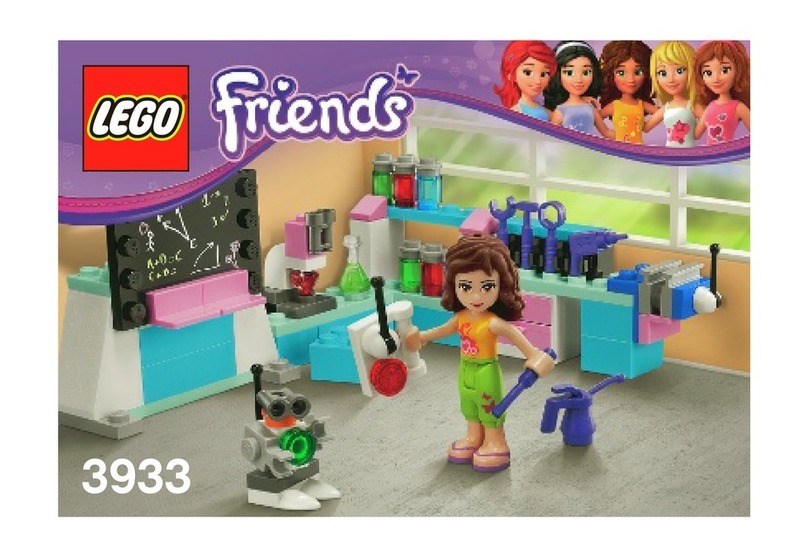
LEGO
LEGO 3933 Friends Assembly guide

PLANEPRINT
PLANEPRINT FOUGA MAGISTER Assembling manual
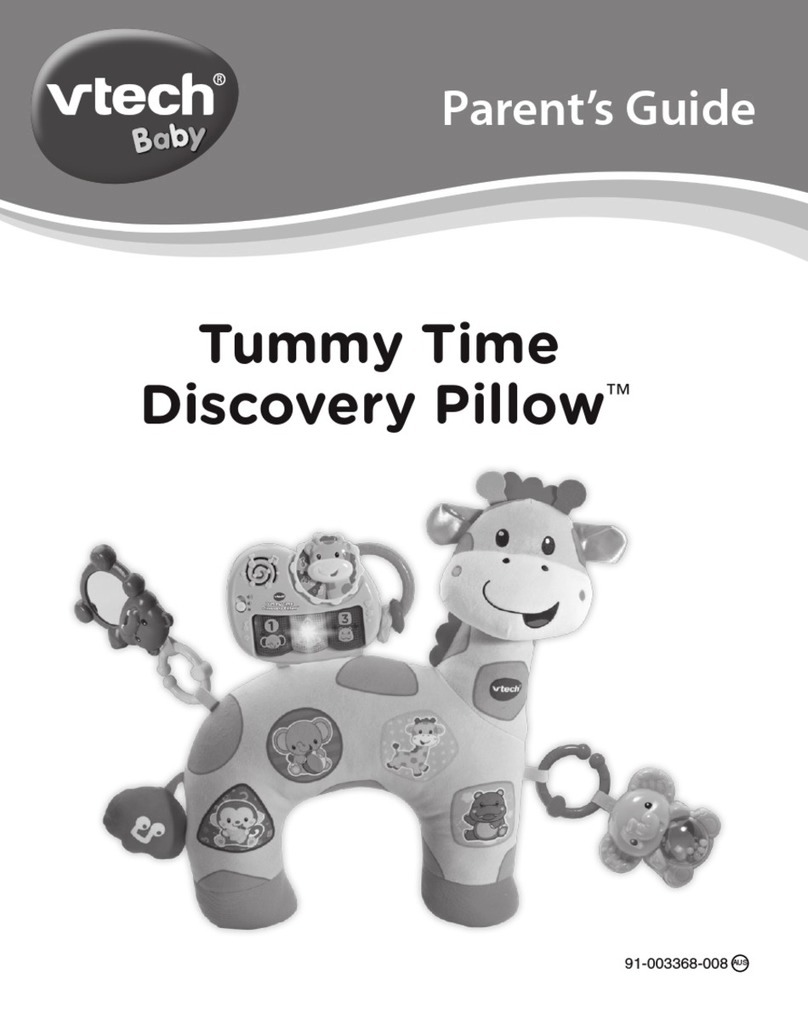
VTech Baby
VTech Baby Tummy Time Discovery Pillow 5068 Parents' guide

Rail King
Rail King 30-4092-0 Operation manual

Kangke
Kangke STAUDACHER GS-300 Assembly manual
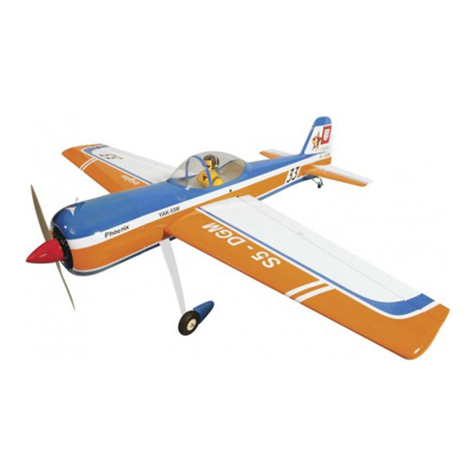
Phoenix Model
Phoenix Model yak 55 instruction manual

BVM
BVM Bandit arf Assembly and operation instructions manual
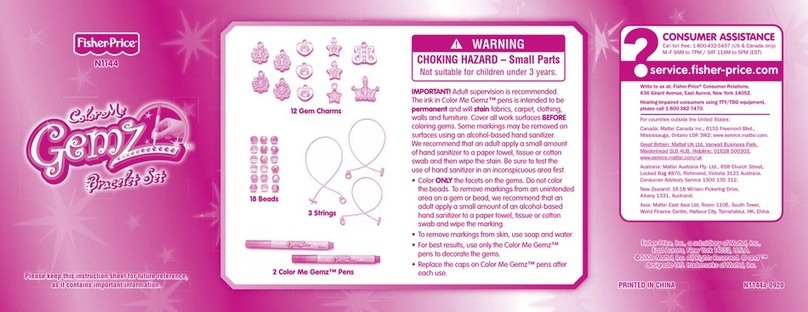
Fisher-Price
Fisher-Price ColorMe Gemz Bracelet Set N1144 instruction sheet
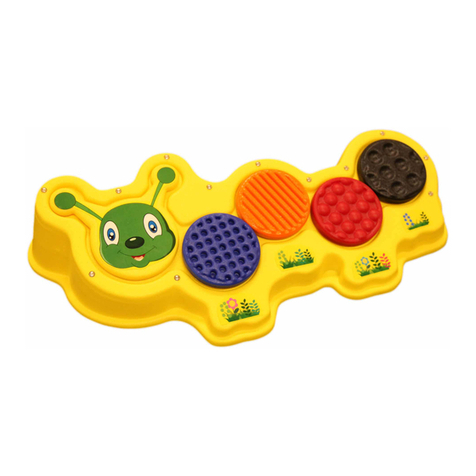
Enabling Devices
Enabling Devices 1203 user guide
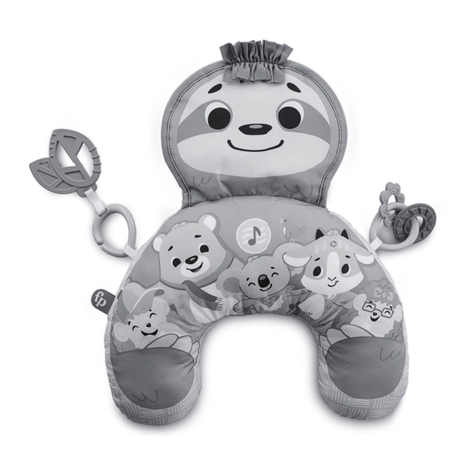
Fisher-Price
Fisher-Price GRR01 instructions
